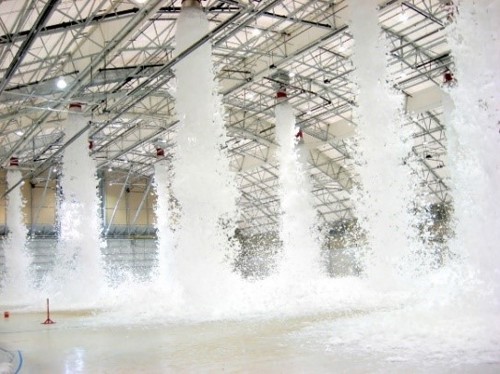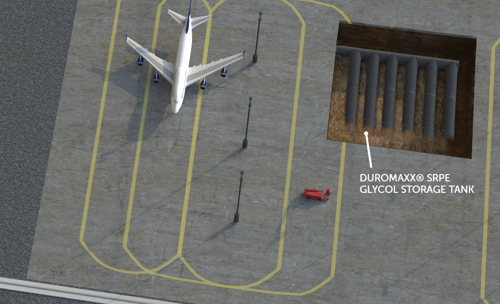
Contaminated Runoff at Airfields
In our recent national webinar featuring “Efficient Design Solutions for Airfields”, one topic that garnered a large amount of interest was dealing with contaminated runoff. Two target chemicals in the case of airfield runoff are spent glycol from aircraft deicing operations and deployed AFFF fire suppressants.
Deicing of aircraft is important in the winter months to prevent ice accumulation, which can cause several issues including reduced lift-off efficiency, decreased flight performance, and blockage of sensors and vents. Since the primary component of deicing fluid is either ethylene or propylene glycol, it needs to be contained and disposed of properly. The US EPA doesn’t want glycol entering storm drains and making its way to our streams and rivers - this is primarily because glycol has a high BOD, or biochemical oxygen demand, which can impact aquatic life in surface waters and can also cause serious toxicity issues if ingested by mammals.
Another targeted runoff chemical at airfields is AFFF – this acronym stands for “Aqueous Film Forming Foam”. This is a fire suppression agent that is commonly used in aircraft hangars, air bases, and shipping ports. In the event of an emergency involving a fuel or oil fire, the use of AFFF is a very effective and fast method for exterminating these difficult high-heat petroleum-based fires. However, one of the concerns with using AFFF is the presence of perfluoroalkyl and polyfluoroalkyl substances, or “PFAS”. PFAS are part of a group of man-made chemicals known as forever chemicals, which do not break down naturally and can cause serious health issues with prolonged direct exposure.

The Federal Aviation Administration (FAA) has set forth guidelines to mitigate glycol and AFFF runoff at airfields. One effective design solution for capturing and storing runoff containing these spent chemicals is to utilize an underground containment tank. An underground tank system such as steel reinforced polyethylene (SRPE) conforming to ASTM F2562 offers benefits such as creating useable surface space with custom footprints, eliminating wildlife & waterfowl attraction, and the ability to install large capacity systems quickly at tight airside locations.
The proper disposal of stored effluent should be in accordance with the applicable US EPA, state and local environmental regulations. It may be possible for contained deicing runoff to be connected to a local wastewater treatment facility and released at controlled volumes for treatment. Alternatively, there are companies which provide environmentally responsible services to collect stored deicing runoff from the containment tank system and recycle it back into useable deicing fluid for the airport. In the case of AFFF, many state regulations require this type of runoff to be sent to an accredited disposal facility. The PFAS contaminants can be reduced through special mechanical filtration devices or removed altogether through a process of very high temperature treatment to break down the PFAS components into a safe byproduct for disposal.

